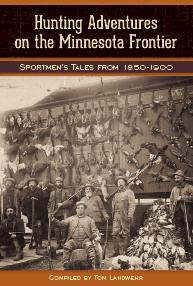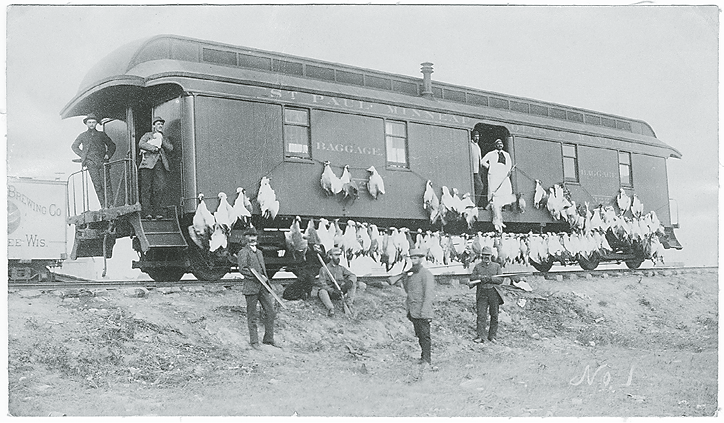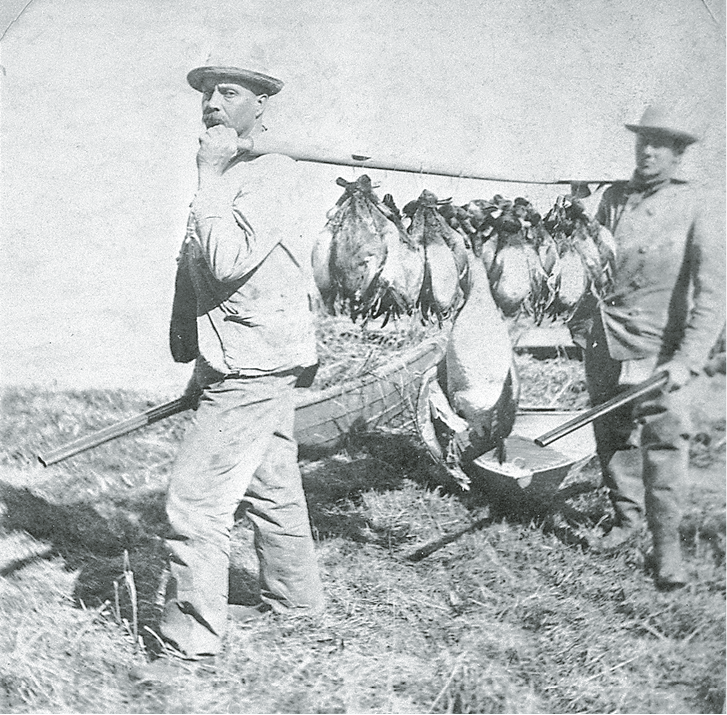Hunting Adventures on the Minnesota Frontier, Sportsmen’s Tales from 1850-1900
Minnesota’s pioneer era is now more than a century behind us. For perspective, consider that World War II is fading from living memory. World War I is already gone. Often the memories of old times are passed down as family oral history, but those, too, fade away. Of course, the best, most accurate stories were written down by the individuals who lived them. A remarkable collection of pioneer hunting stories compiled by former Minnesota DNR Commissioner Tom Landwehr does just that.

The book, Hunting Adventures on the Minnesota Frontier, Sportsmen’s Tales from 1850-1900, has been 30 years in the making. During 1989-90, Landwehr lived in Northfield while working for the DNR Division of Wildlife. An avid waterfowl and pheasant hunter, he happened upon an article about hunting in Minnesota in the late 1800s and noted it was originally published in Forest and Stream magazine. Launched in 1873 in New York by publisher Charles Hallock, Forest and Stream covered hunting, fishing, outdoor recreation and early wildlife conservation. The editor was George Bird Grinnell. One of the longest-running magazines of its time, Forest and Stream merged with Field and Stream magazine in 1930. Field and Stream is still being published today.
In those ancient times before the dawn of Google, Landwehr headed to the library of Carleton College in search of more old hunting stories. There he discovered an archive of Forest and Stream issues on microfiche. He looked through them, seeking Minnesota hunting and fishing stories, which were surprisingly common. He printed off hundreds of pages, then transcribed—typed—them into a computer. After he completed that task, he simply ran out of time to do anything more with the project.
“I changed jobs, moved to St. Paul and had kids,” he says as a way of describing how real life intervened.

Occasionally, he found time to work on the project, refining it to include just hunting stories. He also discovered the Minnesota Historical Society had a collection of historical hunting photos that could serve as illustrations for the stories.
Time to return to the project occurred this year, when incoming Governor Tim Walz appointed a new DNR commissioner and Tom Landwehr was out of a job. During the interim before taking a new position, he rolled up his sleeves and finished working on the book. He wrote introductions to each of the stories and selected photos to accompany them. He brought the completed manuscript to a graphic design shop (full disclosure: Northern Wilds Media, Inc. designed and produced the book). A few months later, the finished book was in his hands. He plans to have it available for sale at Minnesota independent book stores and sporting goods stores, as well as at hunting-related events such as Game Fair.
The stories are mostly focused on southern, western and central Minnesota, because the northern forests were still remote wilderness. Landwehr said the era depicted in the book from 1850-1900 was one of great change. During that time the state was rapidly settled, leading to exponential population growth. Tedious muzzle-loading firearms were replaced with breechloaders, as well as double-barreled shotguns that were loaded with shotshells. Bison and elk roamed the state. Game birds such as prairie chickens, ducks and geese were wondrously abundant. Landwehr remarks that as time went on, writers commented on the decline in wildlife, a likely result of more settlers and diminishing habitat. Editor Grinnell, he notes, was a founder of the conservation movement.
Even so, this was also the era prior to the establishment of game laws and bag limits. Market hunting was occurring, although the hunters depicted in the stories were out for sport. They were men of wealth and privilege who could afford to travel to distant locations where game was plentiful. One of the story authors is Henry Sibley, the first governor of Minnesota, who was a fur buyer and outdoorsman who traveled extensively in the region prior to 1850.
What’s interesting is that even though the story authors were members of the upper crust, they weren’t afraid to get mud on their boots. “Exploring the Kandi-Johi” by J. S. (Tom Landwehr believes the author’s name was John Swainson) recounts an 1856 expedition via horseback and wagon into what was then wilderness. J.S. writes: “A trapper’s path, which was soon lost, and a compass were our only guides. Timber had to be felled, swamps corduroyed, steep hills ascended and the bone and muscle of the whole party put to the severest test. But nobody complained, none seemed tired. We were on our way to the ‘promised land.’”
What they found was a pristine Minnesota that no longer exists. J.S. writes: “Imagine a heaving ocean in an instant being transformed into dry land, and this land covered by a carpet of the richest verdure, interspersed with flowers of every shade, the wild rose conspicuous among the rest, but the blue waters of the deep still here and there peeping through the rents of the flowery expanse, forming crystal lakes of the most perfect purity, and surrounded by groves of majestic oaks and maples. Such was the scene which the following morning, from an adjacent hill, presented itself to our view. Many a fine rolling prairie, many a beautiful lake have I since then admired, but this, my first acquaintance with them, will forever be remembered.”
The party found game and fish in abundance. They shot deer for food daily and also saw bands of elk. Ducks, geese and swans were numerous, as were sharp-tailed grouse on the prairie and ruffed grouse in the woods. The lakes teemed with “pickerel, pike and black bass.” As a captain of the hunters, J.S. restricted their bag to no more than the party could eat, remarking that they surely could have killed enough each day to feed one hundred men. Echoing the sentiment of others in the book, he referred to Minnesota as a “sportsman’s paradise.”
Given the popularity of hunting and fishing today, it is fair to say that more than 150 years later Minnesota remains a sportsman’s paradise. Landwehr said many places mentioned in the book are still known for good hunting and fishing. Let’s hope they remain so far into the future.
Hunting Adventures on the Minnesota Frontier, Sportsmen’s Tales from 1850-1900 is available in our bookstore: click here.

